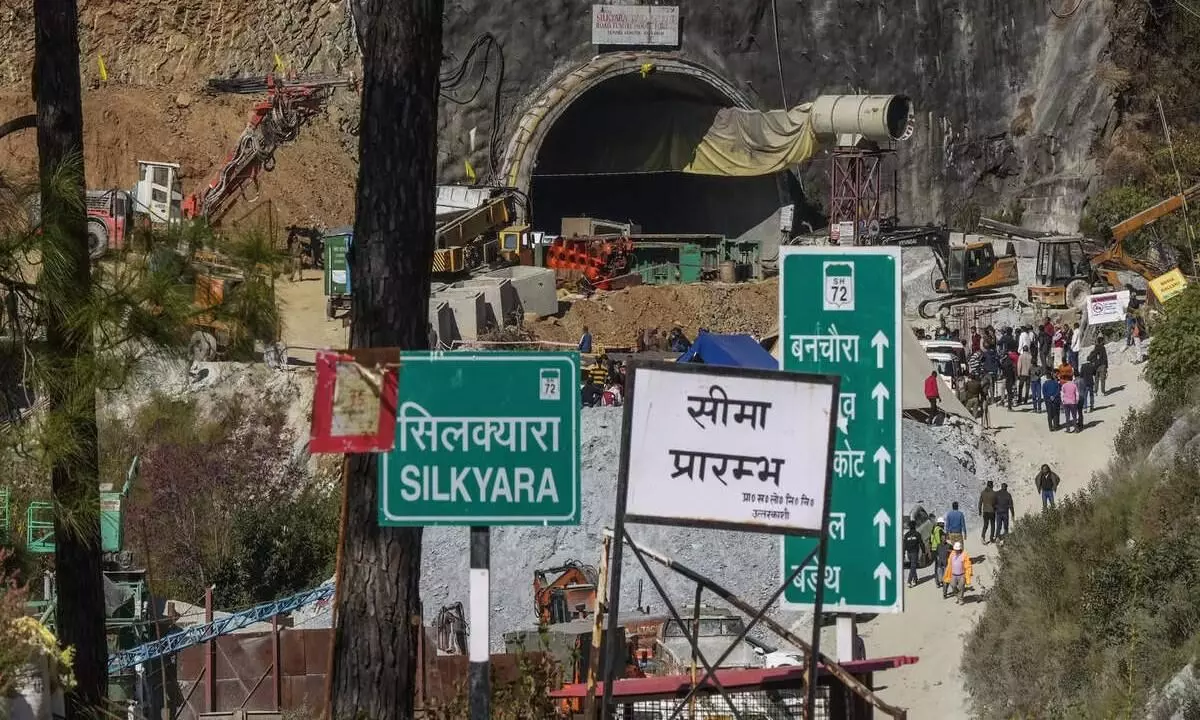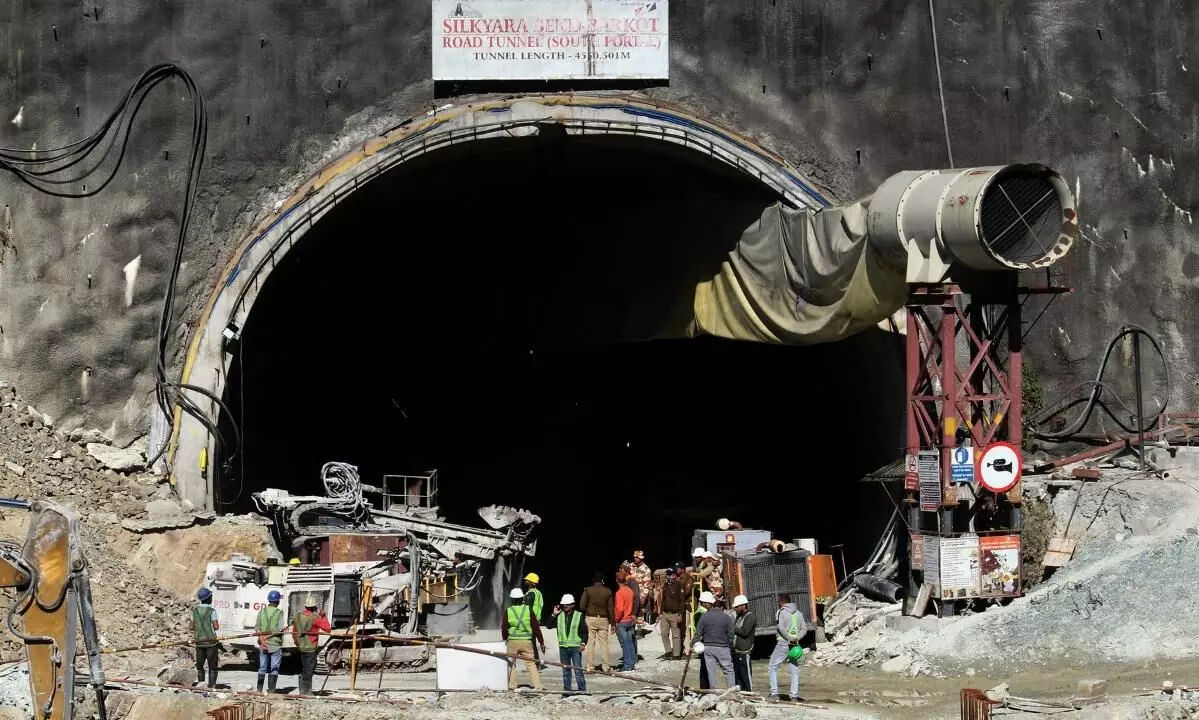
'19-20 collapses' during Silkyara tunnel construction in last 5 years: report
text_fieldsNew Delhi: During the construction over the past five years, the Silkyara-Barkot tunnel in Uttarkashi, part of a larger Char Dham all-weather road project, has collapsed around “19-20” times, reports said.
Forty-one workers, who were trapped in the tunnel for 17 days after it collapsed, were finally rescued after manual digging for over 26 hours by a dozen experts called ‘rat-miners’.
Anshu Manish Khalkho, director of administration and finance at the National Highways Infrastructure Development Corporation Ltd (NHIDCL), the public sector unit overseeing the project, said that around “19-20 minor to medium-level collapses" occurred during the tunnel's construction, as quoted by The Times of India.
Khalkho said, "Such incidents happen during every tunnel construction project, but we were unlucky this time that workers got trapped." “Such incidents happen during every tunnel construction project but we were unlucky this time as workers got trapped,” he said. Khalkho also revealed that more collapses took place on the Barkot side compared to the Silkyara side.
 Also Read - Work on hold, Silkyara tunnel labourers in dilemma amid safety concerns
Also Read - Work on hold, Silkyara tunnel labourers in dilemma amid safety concerns
A specific area within 160 to 260 meters from the Silkyara end, known as the 'red zone' or 'shear zone,' was identified as prone to collapses due to brittle rocks.
The tunnel is part of the Char Dham route in the fragile Himalayan eco-zone, which is expected to make all-weather roads between four important Hindu pilgrim sites, the Gangotri, Yamunotri, Kedarnath and Badrinath shrines in Uttarakhand.
Notably, no team of experts from the union government turned up at the site of the collapsed tunnel “to review how safe it was before the resumption of construction”, reports The Telegraph. “We were asked to be at the spot to receive them but the team didn’t arrive”, Uttarakhand government officials said on Thursday.
Bernard Gruppe, a European company providing design services to Navayuga Engineering, the construction firm undertaking the tunnel project, had previously acknowledged that the "geological conditions (at the tunnel site) proved to be more challenging than predicted in the tender documents."
The government ignored a big threat, according to Himanshu Thakkar, the coordinator of the South Asia Network on Dams, Rivers and People.
The Main Himalayan Thrust, where the Indian plate pushes under the Eurasian plate, runs through Uttarakhand and is close to the tunnel site. Obviously, this has “seismic and shear zone implications”, Thakkar wrote last month. “In the case of the Char Dham Highway project, even environmental impact assessment was avoided by breaking the 900-kilometre long highway into some 53 smaller projects,” he wrote.
Despite locals approaching the National Green Tribunal and Supreme Court. However, but the project continued.
In February 2018, the Cabinet approved the Barkot-Silkyara tunnel. In June, NHIDCL awarded the tender for construction to Hyderabad-based Navayuga Engineering Company and in the same year, Navayuga hired Bernard Gruppe to design and build the tunnel.
 Also Read - Silkyara tunnel: Rescuers resort to traditional rat-hole mining method as modern machines fail
Also Read - Silkyara tunnel: Rescuers resort to traditional rat-hole mining method as modern machines fail























